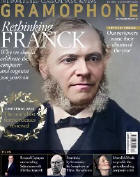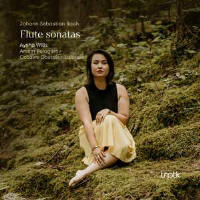Texte paru dans: / Appeared in: |
|
|
Outil de traduction |
|
|
Why Bach? This is what young Canadian flautist Aysha Wills asked herself when deciding what to play for this, her first solo recording. It’s a valid question, too, in the context of Bach’s four flute sonatas being far from under-recorded, and Wills by contrast coming across in her engaging booklet notes as a musician who clearly thinks outside the box. Her eventual excuse to self, however, was that she’s obsessed with them – and there is absolutely space for another album of Bach flute sonatas when they sound this good.
Strange as it may be to begin with TRPTK’s engineering, this is what first impresses the ears. Recorded in Amsterdam’s Walloon Church, there is a striking sense of characterful space and sonority around Wills, keyboardist Artem Belogurov and, for the Sonata in E minor, BWV1034, cellist Octavie DostalerLalonde. There is also tremendous clarity, as though you could almost touch the instruments’ respective timbres. Yet there’s subtlety in the capturing, too – it never tips from engaging to overwhelming.
Equally crucially, these are performances you want to be up close and personal for, with their sense of movement and flow, joyously hand-in-glove dialogue, and the quality and personality of the instruments themselves. You hear this instantly in the Sonata in B minor, BWV1030, as Wills with her powerful yet airily suave boxwood flute (an Eichentopf copy) unfurls a beguiling combination of fluidity and articulation, complemented by the crystalline clarity of Belogurov’s twomanual harpsichord, itself modelled after the Mietke instrument for which Bach probably composed Brandenburg No 5. Then for the Sonata in E, BWV1035, Belogurov plays a second, equally interesting instrument – an 1803 clavichord by Göttingen makers JP Kraemer and sons which, with its drier lustre, gives the flute extra space to shine.
The E minor Sonata is the cherry on the cake, though: their spot-on playing in the Adagio ma non tanto; Wills’s fluidly free spinning of the melodic line; the darkly burnished bristle and croon of DostalerLalonde’s cello (by Pieter Rombouts, Amsterdam, c1690) and the characterful beauty with which she draws it into duetting with Wills; Belogurov’s sonorously twinkling harpsichord just behind. In fact this is a meeting of instrumental timbres and personalities that should stop even those immune to the joys of Baroque trio sonatas in their tracks.
So why Bach? Well, if you’ve got it, flaunt it.
|
|




